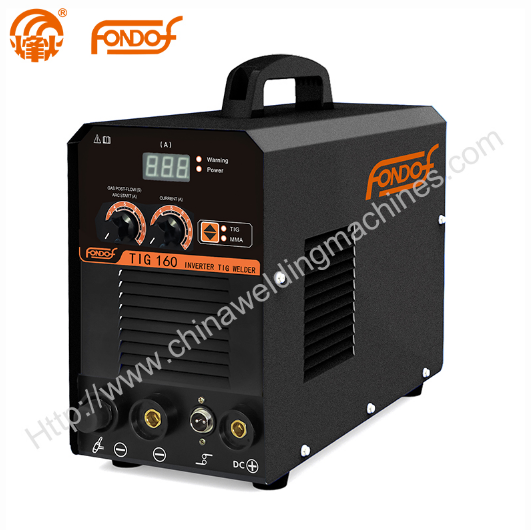Tips for TIG Welding Aluminum on DC Power
Tungsten Inert Gas (TIG) welding aluminum on direct current (DC) power can be a challenging but rewarding process. While aluminum is a highly conductive and lightweight metal, it also has a high melting point and tends to form an oxide layer that can impede the welding process. To help you achieve successful TIG welds on aluminum with DC power, we've compiled a set of valuable tips and techniques:
1. Select the Right Electrode
Choosing the appropriate tungsten electrode is crucial when TIG welding aluminum on DC power. You should use a pure tungsten electrode, typically classified as EWP (electrode, tungsten, pure). Pure tungsten electrodes are the best choice for aluminum because they can withstand the high heat generated during the welding process.
2. Polish the Electrode
Before welding, ensure that the tungsten electrode is clean and polished. DC TIG Aluminum welding requires a sharp electrode tip to concentrate the arc heat effectively. Use a dedicated electrode grinder or a diamond wheel to create a clean, pointed tip. Make sure to grind the electrode longitudinally, not radially, to maintain a stable arc.
3. Set the Correct Polarity
When TIG welding aluminum on DC power, you should use direct current electrode negative (DCEN) polarity, also known as straight polarity. In DCEN, the electrode is connected to the negative terminal, while the workpiece is connected to the positive terminal. This setup helps to focus the heat on the aluminum workpiece, improving penetration and weld quality.
4. Choose the Right Filler Wire
Selecting the appropriate filler wire is crucial for successful aluminum TIG welding. Common filler wire choices for aluminum include ER4043 and ER5356. ER4043 is suitable for welding most aluminum alloys, while ER5356 is better for higher-strength aluminum alloys. Match the filler wire to the base metal you're welding for the best results.
5. Clean the Base Metal Thoroughly
Aluminum's oxide layer can be a significant challenge when TIG welding. Properly clean the base metal to remove any dirt, grease, or oxide layer. A stainless steel wire brush or dedicated aluminum cleaning brush works well for this purpose. Additionally, acetone or a dedicated aluminum cleaner can be used to remove any residual contaminants.
DC TIG WELDING MACHINE TIG 160
6. Use the Right Shielding Gas
Argon is the most commonly used shielding gas for TIG welding aluminum. It provides excellent arc stability and weld cleanliness. Ensure that your gas supply is clean and free of impurities to prevent contamination of the weld pool. A flow rate of 15-20 cubic feet per hour (CFH) is often recommended, but it may vary depending on your setup and conditions.
7. Control the Heat Input
Aluminum is highly sensitive to excessive heat, which can lead to distortion, warping, and burn-through. To control the heat input, use a foot pedal or thumb control to adjust the welding current as needed during the weld. This allows you to maintain a consistent arc while managing the heat input.
Further reading:
Machinery
8. Welding Technique
Proper welding technique is critical when TIG welding aluminum. Here are some key considerations:
- Travel Speed: Control the travel speed to ensure proper fusion. Moving too slowly can lead to excessive heat buildup, while moving too quickly may result in poor penetration and weak welds. Practice maintaining a steady and consistent travel speed.
- Torch Angle: Maintain a slight leading torch angle of around 10-15 degrees in the direction of travel. This angle helps direct the heat into the workpiece.
- Arc Length: Keep a consistent arc length, typically around 1/8 inch (3.2 mm) between the electrode tip and the workpiece. A consistent arc length ensures even heat distribution.
- Overlap Technique: When making a pass, overlap the previous bead by about 50%. This helps create a strong, continuous weld and prevents gaps or undercut.
- Puddle Control: Pay close attention to the weld puddle. A well-controlled puddle should be fluid and uniform, with no excessive stirring or agitation.
- Weaving Technique: While a slight weave or oscillation of the torch can help distribute heat evenly, be cautious not to overdo it, as excessive weaving can lead to a wider bead and potential fusion issues.
9. Practice and Patience
TIG welding aluminum on DC power can be challenging, especially for beginners. Practice is key to improving your skills and achieving high-quality welds. Start with scrap pieces of aluminum and gradually work your way up to more complex projects. Be patient and persistent, as mastering aluminum welding takes time and dedication.
10. Post-Weld Cleaning and Inspection
After welding, it's essential to clean the weld area thoroughly with a stainless steel brush to remove any oxides or contaminants. Inspect the weld for defects such as cracks, porosity, or lack of fusion. If necessary, perform post-weld heat treatment or stress relieving to ensure the integrity of the weld.
Conclusion
TIG welding aluminum on DC power is a precise and rewarding process that requires the right equipment, techniques, and attention to detail. By selecting the correct materials, maintaining proper cleanliness, and mastering the welding techniques, you can achieve high-quality aluminum welds that meet the demands of various applications, from aerospace and automotive to fabrication and artistry. Remember that practice and patience are key to becoming proficient in TIG welding aluminum.
Next
None
If you are interested in sending in a Guest Blogger Submission,welcome to write for us!


Comments
0